Website - the place where your business exists on the Internet. In the past, it was a sign of the company's modern approach to its development and, at the same time, an unnecessary expense in the opinion of small businesses. Over time, it has become a showcase of the company and, in a way, the basis of internet marketing. It is rare for a modern enterprise to not have its own website. Although there are still some that do not see its advantages and the power to influence their potential customers, they are based on a traditional approach to the consumer. Is web development nowadays really the basis for the development of a company? Or maybe this is just an invention of the 21st century and exposing companies to further expenses?
- Designing websites and their types
- Online store, blog and what else?
- What does the construction of websites look like?
- Website elements
- General rules for creating websites - what should you know?
- The first impression is made once
- Professional website development - what are the benefits?
- Save time thanks to cooperation with experts
- Website designing - where to start?
- Creating websites and online stores in the era of generating leads
- Website development - what is SEO?
- On-page SEO
- Rules for creating websites - take care of the user experience and user interface
- The power of UX
- Creating a website and attracting customers from social media
- Designing and creating websites in accordance with the principle of responsiveness
- Website development - why content matters?
- Website design for businesses - where should you start?
- Website designing - what stages does it consist of?
- What are the features of a good website?
- Is Professional Website Design Necessary For Small Businesses?
- Creating websites for companies by a marketing agency
- Website - how to make it an effective business tool?
- Website development - price
The research of the Central Statistical Office shows that in 2021 as many as 65.6% * users used the Internet to search for information about goods or services on websites. Despite this, many businesses still do not have a website. Why? Their owners say they are doing well and making a profit without it. Some people are afraid of incurring additional costs, having no guarantee that it will bring measurable benefits. However, the 21st century is the time of the Internet and the intensive development of its use by users. Companies should be able to translate this into their success. However, creating websites is an important decision in any business. Therefore, below we present in detail everything that is worth knowing about the website, its elements and benefits that result from having it.
Do you need a modern website for your company?
Do it with Commplace!
Designing websites and their types
Simply put, a web page is an HTML document displayed in a web browser (eg Chrome, Mozilla Firefox, Opera, etc.), each of which has its own unique web address called a URL. Web pages can be divided due to the function they perform. Although each year, due to the intensive development of the Internet, newer and newer solutions are created. Nevertheless, the pages can be divided into:
- One Page - as the name suggests, it is a website consisting of only one page. Easy and simple to use, especially on mobile devices, it is a great solution when we want to provide a small amount of information about our company. It can include, for example, a portfolio, a company's showcase or a product page.
- Multi Page - a website with subpages in the menu that redirect the user to more extensive and broader information.
- Business card - this is the most basic version of a website, containing a minimum amount of information. Most often it includes a description of the company, a brief history and contact details. It will work for enterprises that base their activities mainly on social media or do not plan to implement any additional e-marketing solutions, but only want to mark their presence on the web.
- Company website - a place where the company encourages people to use its services or buy products. A multi-page website, extensive, with extensive information about the company, its employees, contact details and products or services. He often also uses blogs, portfolios and special product pages. It is the basis of e-marketing for those companies that want to attract new audiences.
Online store, blog and what else?
- Online store - it is focused primarily on presenting products and less on presenting the company. It contains detailed descriptions of the goods along with the price and the purchase option. On the website, you will find a menu with category descriptions and a basket, thanks to which users can make transactions. Often there is also an option to set up a user account, which allows you to check the status of the order or collect additional discounts. Since the pandemic, the popularity of online stores, i.e. e-commerce, has been growing due to the multitude of amenities offered to internet users.
- Blog - a place to share thoughts, recipes, stories, life events or various expert articles. It can be a separate page or a subpage. In the past, it was a form of an online diary, but nowadays it is used by companies to increase traffic on their website. All this thanks to positioning and sharing specialist knowledge.
- Internet portal - serves to provide information on various topics. Examples include websites such as onet.pl, interia.pl or wp.pl.
- Vortal - a website devoted to one topic, providing precise content. They can be related to films, books, raising children, as well as economic, financial and marketing topics. The vortal brings together a community interested in a given field. It enables users to communicate in the form of discussion chats, chat rooms and a forum on the website.

What does the construction of websites look like?
Today, a website is a powerful tool that allows you to share information about your activities with the world. It allows the company to become more recognizable, which in turn leads to customer acquisition, retention of existing ones and differentiation from the competition. All this has a significant impact on its further development. In order for a website to achieve its goals, it must be properly thought out and structured. Designing and creating websites is the sum of many elements, each of which has an important role to play.
- Headline - This is the top part of the website that is first displayed to consumers, which makes it strategically important. It should include: a legible menu, a visible logo, in the case of online stores, e-commerce elements such as a basket, quick contact and buttons pointing to subpages
- CTA button - call to action - is a button encouraging consumers to take a specific action, for example: buy, subscribe to the newsletter, contact, find out more, participate, download, etc. CT is engaging. Its task is to turn a passive client into an active one. A properly and effectively designed button, placed in the right place, will make the website visitor notice it and click it in a fraction of a second. For the company, it is of great importance in the lead generation process
- Pop-up button and widgets - these are special buttons informing about the possibility of using a trial period, subscribing to the newsletter or reminding about discounts. Designed in an intriguing and interesting way, they also have a chance to increase lead generation.
- Search box - is a place for an internal search by the user so that they do not have to search the interface of the website. Properly tuned shows the right content, which minimizes the user's time and effort, increasing his satisfaction as well as increasing conversion rate.
Website elements
- Hero - is an element containing a catchy image - e.g. a product photo - that attracts attention and communicates the appropriate message. Hero creates an emotional bond with users, engaging them to continue scrolling the website or pressing CTA buttons. It tells a story visually without using words. It communicates the company's values: what it does, what its purpose is, what makes it unique, etc.
- Breadcrumbs, i.e. crumbs - these are navigation elements that make it easier for the user to navigate the site and facilitate orientation. They increase the website's usability or "searchability". They are a great support, especially for new users visiting the website. Designing websites for companies with the use of crumbs makes the most sense in large e-commerce websites and platforms, as well as media and information websites.
- Footer - is the bottom part of the website that contains a lot of useful data for users. Company contact details, brand identification marks, faq page, privacy policy, terms of use and GDPR, regulations, contact information, links to social media, subscription button, access map should be listed here.
- Form - is a digital version of a tangible paper form that allows you to send inquiries or information to a company over the web. Thanks to the use of the Internet, the form has many options and functionalities, however, it still needs to be easy to use.
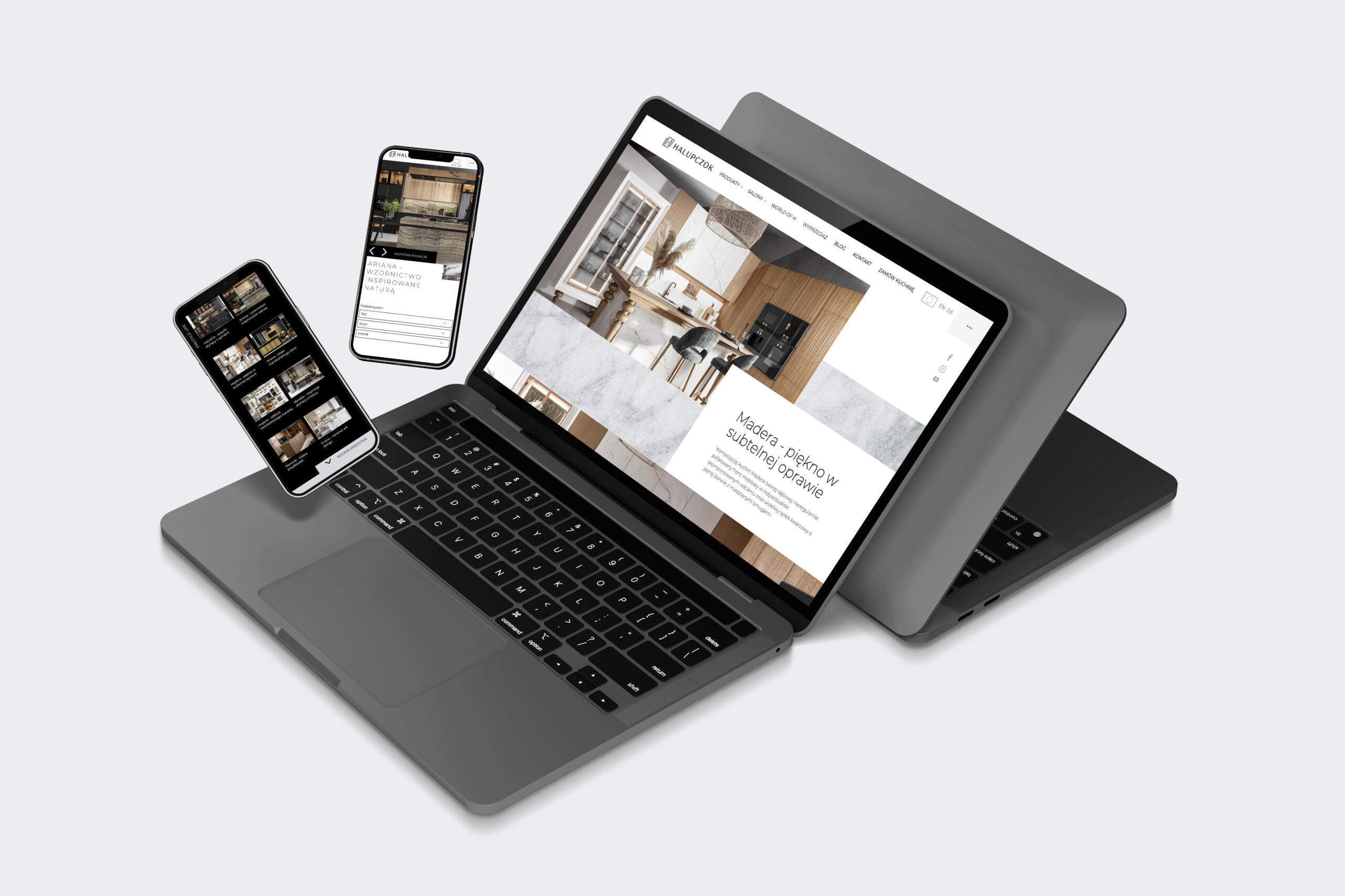
General rules for creating websites - what should you know?
Professional website development is usually a long and complicated process. Many entrepreneurs, however, still claim that it only involves entering text and graphics on a ready-made template, e.g. in WordPress. This is far from the truth, because an effective website is much more.
A professional web designer prepares an original project, taking into account the goals and needs of the client. However, there is a checklist of items and golden rules for creating a website that you should always follow. Designing websites is, of course, an art in itself, thanks to which your company has a chance to stand out from the crowd and attract new customers. Nevertheless, there are some important points to keep in mind with each project.
The first impression is made once
A website is like the cover of a book. One second is enough to attract attention or lose the interest of the recipient. Everyone probably knows the phrase: "don't judge a book by its cover." However, humans are visual learners. We pay attention to the external appearance in a natural way.
In the case of products, the packaging counts. We evaluate the attractiveness of websites in the same way. At the first moment, we record the overall layout, intuitiveness of the website, colors used, pictures or videos used. It should be remembered that the text and graphics complement each other and create one, common whole. They revealed the company's mission and vision in a way that is transparent to consumers. The colors or font forms used will not be accidental, because they influence the opinion of users and the image of the company that is created in their minds.
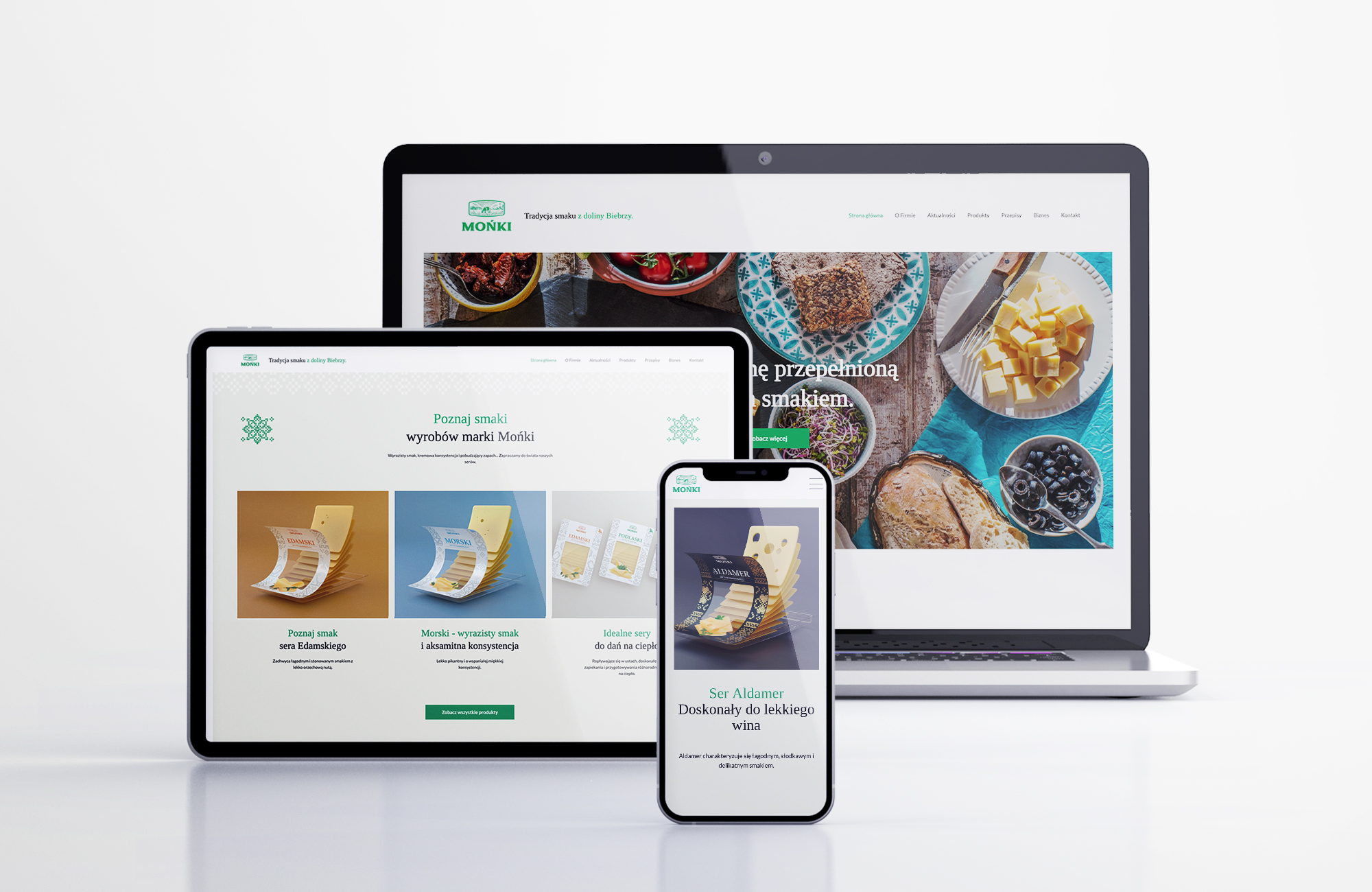
Each color and shape has its own unique features and is characterized by different emotions and feelings. Designing a website in marketing agencies, therefore, begins with an in-depth recognition of your industry and target audienceto properly target information to your audience. For example, companies in the technology and automotive industries often use the color blue to denote trust, reliability, safety and stability. Examples of such brands include Ford, Peugeot and Dell. In turn, restaurants or food producers like to use the red color that evokes the most intense emotions. Examples include Mc Donald and Coca-Cola. It is no different in the case of typography, i.e. types of fonts and their typefaces, which are extremely important elements of a website. Designing websites with respect for the relevant rules has an enormous impact, first of all, on the readability of the website.

Professional website development - what are the benefits?
Over the last dozen or so years, in the era of the constantly growing importance of the Internet, many enterprises have noticed the benefits of being online. Creating effective websites would start to be perceived not only in terms of costs, but also tangible profits, which are manifested, among others, by:
Acquiring new customers
If your customers are looking for products or services offered by your company, a website is a must. It allows you to easily reach consumers and convince them to your offer. The more that the competition is awake and probably also has a website. If we don't want other companies to steal our customers, we have to go to the Internet. Internet users are constantly looking for information about products on the web. They want to know opinions, reviews, detailed descriptions (e.g. technical parameters) and also be able to buy. If we do not have a website, we are losing potential customers to other companies.
Credibility
Creating websites for companies is creating the basic source of information about your company, its products or services. Access to such data translates into its credibility in the eyes of the client. If we want to buy anything, be it as an individual user (B2C) or as a company (B2B), we want to get to know the contractor. The first thing we do on the web is to enter the brand name in the Google search engine. If it does not appear on the screen, we begin to doubt whether such a company exists at all. Without a website, customers may also start to question its legality. It is thanks to the website that we have the opportunity to view its products, contact the appropriate department or even check the address of the stationary store.
Mark
Company brand it is the whole of meanings and values that guide it. They are extremely important to show who the company is, what it represents, what is its purpose, mission and vision. All these elements also make the customers distinguish the company from the competition and create its image in their minds. Creating a website does this as well building an image on the web. Thanks to it, you have a real influence on how potential customers see you. Each content, graphics, all elements appearing on the website shape the brand image.
Save time thanks to cooperation with experts
Creating websites is mainly to facilitate work in the company and increase positive consumer experience. If you do not have a website, at best, customers will call you with simple and trivial questions, such as: what is the company's location or opening hours. If no one picks up the phone or calls back - the customer will remain dissatisfied with the service and their impressions will be negative. A website therefore increases not only credibility but also employee productivity. Thanks to the contact form, the chance that the customer will write an e-mail instead of calling, which can be answered at a convenient time. On the other hand, by posting all the most important and comprehensive information on a website, for example in the "faq" tab, customers receive "in advance" answers to most of the questions that might arise in connection with the transaction.
The same applies to updating company information, such as changing the hours of operation. Customers who are informed about the changes on an ongoing basis will not feel frustrated, and on the contrary - they will feel that they are important and important for the company. Automating the customer service process also saves your money. If orders can be accepted via a specially designed form, warranty claims can be handled online and visits can be registered online, you will facilitate the use of the company's offer not only for customers but also for your employees.

Global reach
Professional website development makes the company available to every internet user thanks to the information contained on the website. Regardless of the time or place of his stay. Global reach is reserved not only for large corporations, but also for small enterprises.
Website designing - where to start?
It should be remembered that a website is an efficient machine, if all its elements work together harmoniously. Each of them has their own assigned role, but if one of them is missing - the whole puzzle will not work efficiently and bring the expected profits. Let us use simple examples. If the website has a modern design and interesting graphics, but it takes more than 10 seconds to load, it will most likely make the user irritated. It is unlikely that he will try to visit the site again. If the site is very readable and easy to navigate, but it does not appear in the search engine at first, but on the second or third page, again - we have a problem. It is unlikely that anyone will find it, because users most often click on the first few items that appear in the Google search engine.
If a website fits both laptop and mobile phone perfectly - that is, it is responsive - but does not contain interesting, user-adapted content, they will not use it. However, they can go to the competition if it encourages them with interesting content. By providing them with the content they seek and need. Such examples could be multiplied, but the most important thing is to capture the sense of professional website development.
Each site has elements that affect us visually. We cannot forget about those that we cannot see "with the naked eye", that is, a number of technical elements. They all work perfectly together. If a significant part is missing - it will prevent the website from fully influencing customers in the desired way. That is why it is so important to get to know all the most important elements that make up a website. So what exactly is creating a website by experienced specialists and what aspects should be primarily focused on?

Creating websites and online stores in the era of generating leads
Describing above what the website consists of, we have mentioned, among others about the form. To many people, it may seem completely redundant, because they do not understand or do not know the essence of generating leads. Adequate and effective website development is not only about getting the user to visit the website. This is just the first step. Only when he leaves his contact details, we can turn him into our client who will bring the company tangible profits.
Therefore, generating leads is the process of acquiring contact details of potential customers. How? Including by making a phone call to the company, sending an e-mail or just filling out a contact form. However, you must remember that what you do later with the information obtained is the key to transforming a contact into a customer. Someone who contacts the company is the person most likely interested in purchasing a product or service. It sounds simple and uncomplicated, but not understanding the subject lead marketing results in not increasing its consumer base.
Lead generation includes the right digital marketing strategies to help you attract new consumers. Professional website design allows you to generate 50% more leads at 33% lower costs **. However, not every lead becomes a new customer immediately. If someone asks a question and expresses interest in our service or product, and we do nothing about it - we are wasting an opportunity. Professional website design in terms of generating leads increases our chances. Thanks to it, the company can not only increase the customer base at a lower cost, but also shorten the sales cycle and increase turnover.
Website development - what is SEO?
Nowadays, most Internet users expect that they will find all the most necessary information at the top of the results in the Google search engine. Users rarely open all suggestions from one side. And going to the second or third page in the search engine is a real rarity. For website owners, the listing of their website as one of the first on the search list is therefore one of their most valuable investments. What actions should be taken to make your website appear at the top?
The basic principles of creating web pages concern their search engine optimization, They are used for this SEO activities. This is the primary process for Google to receive your website in the best possible way and, as a result, increase its position in search rankings. The purpose of this action is to match the website as precisely as possible to the search engine's algorithms and to facilitate access to the website for Internet users, and as a result to indicate what topic is taken on our website and to facilitate its absorption and scanning on the web. SEO optimization is broken down into two processes, each of which is equally important when it comes to successful web development.
On-page SEO
On-page SEO - all actions taken on a website that improve its position in search results. Its task is to ensure that the content of the website is properly indexed and thus properly understood by search engines. On page SEO is also about all sorts of techniques thanks to which the website is pleasant for Internet users, ensuring a positive experience of using it. It includes keyword research, introducing HTML tags, customizing page titles, creating high-quality content, improving the meta title and description, and building internal links.
Factors that influence on-page SEO:
- page speed - Google ranks faster websites. The loading time, in turn, is influenced by JavaScript files, high-resolution images, the length of subpages or the selected hosting
- title tags - Google bases its results on keywords contained in the so-called "Title tags"
- meta descriptions - short descriptions of the page content displayed in the search engine
- content - what matters here is the quality of the content. It should be unique, useful for the user, easy to understand as well as adequate to the Internet user's query
- HTML headers - help search engines understand what the content of a given website is about, define headings and subheadings
- internal linking - refers to deliberately placing a hyperlink on a website to another subpage within the same website.
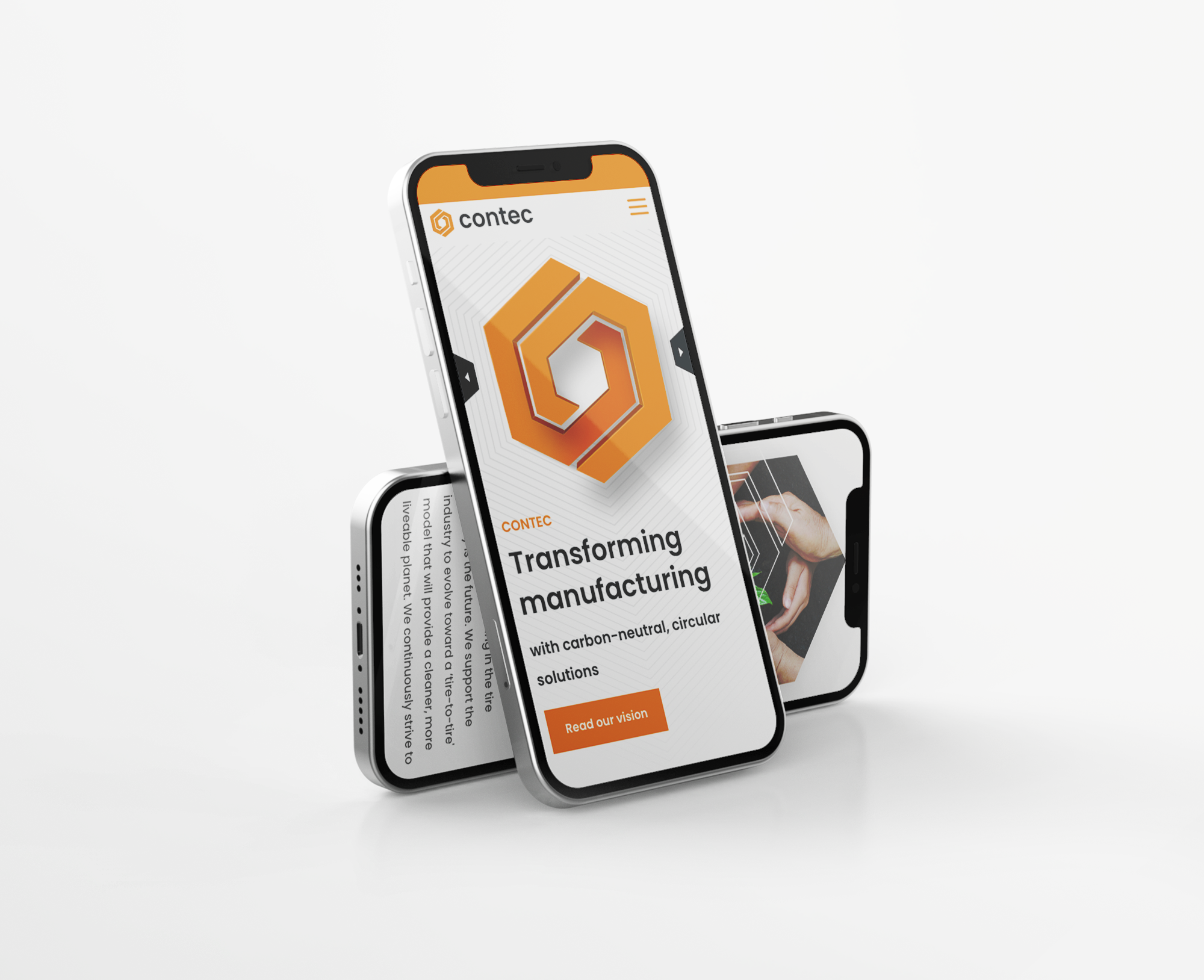
Off-page SEO - designing and creating websites also includes activities carried out outside the site to improve its position in search engines, although we do not always have full control over them.
Factors that influence off-page SEO:
- Backlinks - the number and quality of websites that connect to the content of the website through guest blogging, being presented in commercial publications, appearing in podcasts, participating in forums, creating a company blog or press releases
- Domain authority - it is influenced by the time of having a domain name, its history, the number of 404 pages or the number of backlinks
- Social media - social media posts help increase website traffic thanks to brand promotion on the Internet and interaction with your customers.
Both on-page SEO and off-page SEO are key to our position in search engines. You cannot focus only on some elements, because only together they allow you to achieve the goal. Only thanks to the comprehensive optimization of the website we have a chance to achieve satisfactory results.
Rules for creating websites - take care of the user experience and user interface
Nowadays, creating websites includes not only a number of technical or content elements. It is also designed to make the entire experience of navigating the website memorable to the user. The multitude of websites that we open on a daily basis make companies outdo each other in providing us with visual, interactive and emotional effects. All this to stand out in the maze of competing websites. The average internet user only needs a few seconds to make a decision that is important from the point of view of the company - I stay on the website or leave it. For this reason, professionally website design must also include the user experience and user interface. What exactly are both processes?
The power of UX
User experience is about the ease of use of a website, which directly translates into increased interaction between the consumer and your company. The impression the website produces depends on whether the user will want to come back to it again. User experience is therefore about predicting its needs. So as to help the user navigate the website in order to increase the conversion rate.
Building websites with user experience in mind encourages the Internet user to interact with the company widely. This happens through call to action buttons, filling out forms or subscribing to the newsletter. If the navigation on the website is unintuitive, the internet user cannot find the information he needs. When the texts are hardly visible and understandable, the consumer will not only be irritated, but also less likely to return to our website and use our services or products.
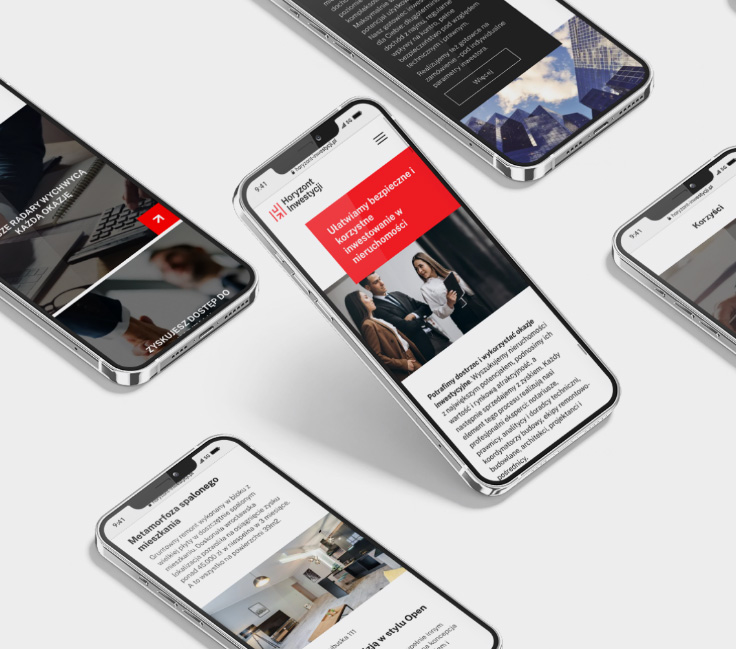
In addition, if you sell your goods online, the development of websites and online stores must include a properly designed user experience in order to cause as few cart abandonments as possible, which directly leads to an increase in your profits. Another important aspect of this process is reducing customer service expenses. The user, finding all the most necessary information on the website, will not be forced to use chats, phones, e-mails or social media.
Designing and creating websites with user experience is a highly empirical field based on understanding the psyche of our consumer. When we "enter" his mind, we will know how to plan the number and sequence of visible screens on a website. How to present the content of the information or how to design subsequent actions taken by the user. The benefits for Internet users from the use of user experience include:
- easier online shopping,
- attachment to a given website and more willing to return to it,
- increasing interest in the website, which results in longer time spent on the website,
- quick and correct finding of the necessary information, which translates into increased satisfaction and building the company's credibility.
The user interface makes sure that the page layout is pleasant to read. It applies to its entire design: color, button style, typography, menus or galleries, which are designed to evoke the brand's identity - its values, mission, vision, tone and other elements.
Creating a website and attracting customers from social media
Nowadays, it is difficult to imagine a person without an account in social media such as Facebook or Instagram. These are the main places to share the details of your life with your friends. The same applies to companies: thanks to social media, we have contact with our customers and, additionally, we can attract new ones.
Consumers hitting your social media channels can easily go to the website to learn more about the company. From their Facebook or Instagram accounts, customers are directed to the website to encourage them to take specific actions. Social media is only used to attract their attention and provide basic information. In turn, professionally creating websites will allow you to convince consumers, for example, to buy your products. If you are intrigued by advertising in social media, but do not provide the address of your website, the consumer may opt out of the next step in the customer's journey.

Designing and creating websites in accordance with the principle of responsiveness
"Among Poles over 15 years of age, 96.9% use a mobile phone, and 77.3% use the Internet in 2021, while among smartphone users as many as 82.1 use it to browse the web. This is the result of the "Public opinion survey on the functioning of the telecommunications services market and consumer preferences", carried out in November 2021 by the Office of Electronic Communications (UKE). " ***
The above data clearly shows that the principles of web design must also apply to mobile devices, which have become the main source of Internet use. Hence, it is so important that websites automatically adapt to the requirements of each device. Why is it worth taking care of it? A responsive website is not only a convenience for users who can easily navigate the site. It is also an advantage for the website owner who does not have to create several versions of pages for different types of devices or browsers. A well-prepared website automatically adjusts all its elements, such as: graphics, font type, size of individual elements, and above all, it adjusts to the size and resolution of the display. As a result, the Internet user obtains an easy, clear, comprehensive and readable website with intuitive navigation, regardless of the type of device used. And this, in turn, influences his positive experience with our website, which translates into the company's profits.
Website development - why content matters?
All content published on the website, including paragraphs, headings, images contained in all subpages, articles, blog entries and even product descriptions, are of great value. Both for the user and positioning in the search engine. Professional website development should be based on unique, audience-focused content. Only this approach brings measurable benefits. Content marketing attracts the attention of our users. Puts the company as an expert and encourages you to re-enter the site. Properly tailored articles for the target group provide knowledge and necessary information. Thus, they contribute to building a positive brand image. Educating users builds a bond with a given company and allows you to maintain longer relationships. In the long run, it translates into increased traffic on the website.
Website design for businesses - where should you start?
Building effective websites doesn't start with practice, but from the bottom line. First of all, you should answer the question for what purpose we design it. If we ask ourselves what we want to achieve, we will know exactly what we are striving for. Even the most modern website, with the most beautiful design, will not bring any benefits or profits if it is not tailored to the goals and needs of your users.
Do you want to create a website to sell your products or to provide only information about them? Or maybe you want to distinguish your brand from the competition or generate inquiries from potential customers? A clearly defined goal is the starting point for starting work on creating a website. But do not use the vague phrase "I want to increase the number of customers." A goal formulated in this way has no substantive value. It also does not give any specific tips on how the final website should look like.

Website designing - what stages does it consist of?
The next step will be to identify your target audience and create one personas - in marketing it is extremely important. For this purpose, it is worth specifying: age, sex, place of residence of the consumer. Explore what you are interested in as well as "enter" deeper into the subject and find out what is the way of using the Internet. Next, you need to know the persona preferences. What values does life follow? What are his / her goals in life? How does he spend his normal day and what does he do at the weekend? At what times would he / she probably use your product or use your service, and what are the factors that will make a given person enter the website. The more questions you ask and the more answers you get, the better your website will be tailored to your users' needs.
Creating websites in the next stage includes building the website structure and the number of subpages in order to make navigation of the website easier and most effective for the customer. This should be based on the analysis of keywords to know what our current and potential customers need and are looking for on the Internet. Particular attention should be paid to the name of the home page, the name of the product category (e.g. roof windows, luxury kitchen) or the name of the services (medical services, hairdressing services). The placement of subpages is made in the form of a mock-up, yet without a specific deisgn or font color. At this stage, we focus on placing the elements in such a way that the customer first sees what we want to convey to him in the first place.
Website development is also closely related to the creative concept, i.e. the next stage involving the graphic vision of the website. The visual concept is very important, but not the most important. Because only filling the page with the appropriate content - that is, the content of the page - has an impact, for example, on the order in which the website is displayed in the Google search engine. There are also all kinds of technical issues that cannot be forgotten. These are the previously mentioned optimization for SEO, UX, UI or CMS, i.e. a content management system.
The first impression is made only once.
We will create a modern website for you.
What are the features of a good website?
Knowing what elements a website should consist of, we can summarize its most important features. Undoubtedly, the benefits and the assumed effects will be brought to us by the website, which is:
- Effective - the website should achieve the goals set at the stage of its construction
- Intuitive - that is, uncomplicated and logical in reception for users. The Internet user entering the site for the first time should be able to navigate through it immediately, without any difficulties
- Safe - every website must be protected against viruses and intrusions, also ensuring the privacy of recipients
- Reliably made - on a professional website there is no room for poor-quality graphics, spelling errors or truncated texts
- Visually attractive - containing elements that are pleasing to the eye, distinguished by a modern, but unobtrusive design, with a well-thought-out graphic design or a color and font scheme
- Responsive - that is, friendly to both mobile devices, laptops and desktops
- Fast - we mean fast loading time, because nothing increases the frustration of the Internet user as much as a page that loads longer than 5 seconds

Is Professional Website Design Necessary For Small Businesses?
Many small business owners ask themselves, "Do I need a website if I have a small business?" This is quite a common problem for business founders. Even nowadays, you can meet with the belief that web design is needed only by large corporations. Meanwhile, the statistics speak for themselves:
- 46% of Google searches contains the intention to buy a product or service in the area,
- as many as 97% internet users use Google searches to find a local business
- 70% users will visit the store after what they read on the website ****
Currently, the website is a starting point in the process of attracting new consumers. Only later are advertisements implemented on various websites or activities in social media. Ultimately, each user will want to check our company through the website. In addition, just having a company account on Facebook is neither sufficient nor effective. First of all, because of the rapidly disappearing content on the board. The user rarely has a chance to find exactly the information that interests him. Only the website offers this possibility. Plus, it offers tons of extra benefits, especially for local businesses. Improving its visibility on the web and allowing it to stand out from other smaller businesses.
Creating websites for companies by a marketing agency
It is not enough that the company has had a website for several years. A lot has changed during this time! Taking this into account, it is worth doing an audit from time to time and perhaps making the necessary modifications. To understand how important professional website development is, and over time also rebranding, it is worth looking at an example below.
The first photo shows the website of one of our clients - MSM Mońka. This is what the website looked like in 2013.
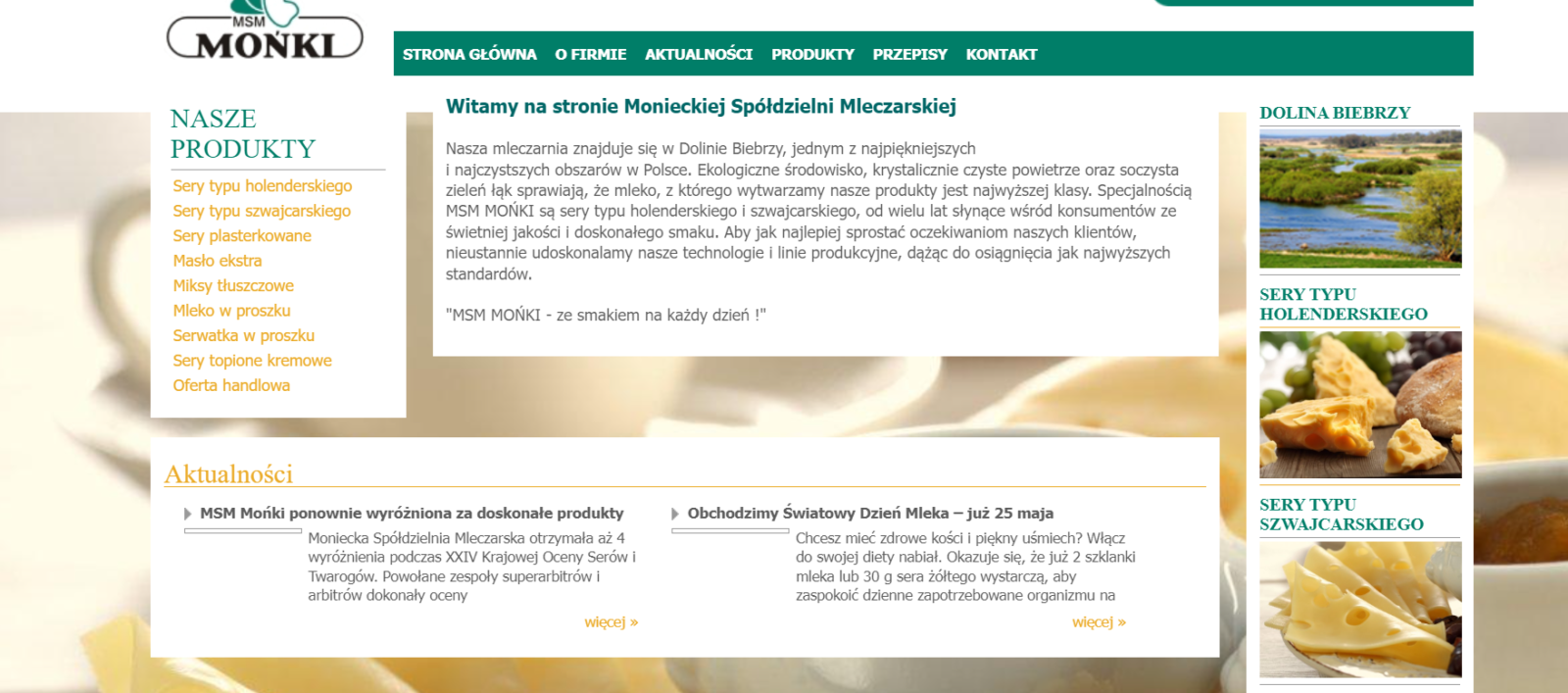
Below, we can see the rebranding site done in 2020 by a team of experts from Commplace. At first glance, you can see how modern design, minimalist look and high-quality graphics can influence the impressions of the website user. Clear and intuitive layout, design adapted to the target group, unique graphic design. All this makes it easy to find all the information you need on the website. The whole is complemented by the most important and at the same time basic elements of an effective website. These include SEO and UX optimization, which increase the number of orders and increase brand awareness in the minds of consumers.
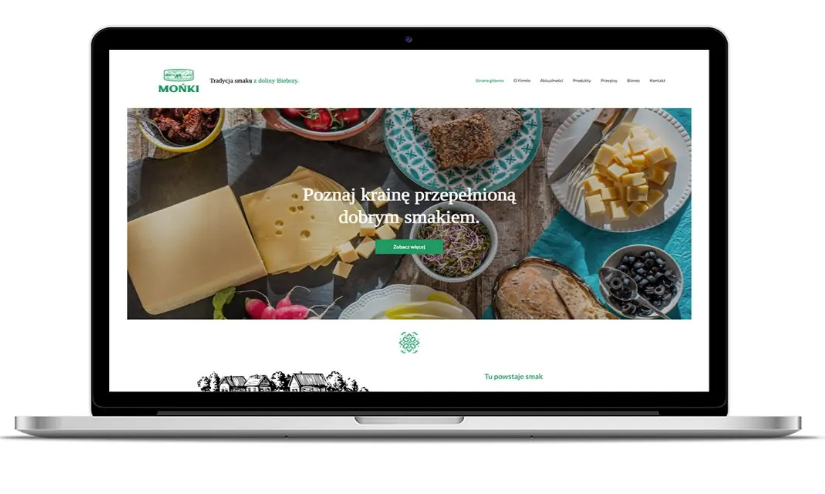
Designing and creating websites may seem like a simple activity. However, when we start to understand all the elements that make up it, we usually realize that we will not create it ourselves. This process requires not only knowledge, skills, experience, but also knowledge of the appropriate tools. marketing agency if PR agency, employing experts, will save your time and money by creating a website that will bring your company the expected results.
Creating effective websites is possible thanks to a marketing agency that knows what your company really needs. With the help of a properly designed website, you will gain the interest of new customers and those present will appreciate your commitment to making shopping even more enjoyable. With the help of specialists, you will not only "set up" a website. You can also use their support at a later stage, so you can be sure everything is running smoothly. Experts from the agency know that an engaging website today is not only text and attractive photos, but a number of "technical" elements, each of which contributes to the correct and effective impact of the website on a potential consumer.
Website - how to make it an effective business tool?
Well-designed websites are effective business tools. Ordering the creation of a website to a specialized entity guarantees tangible results. Specialists will take care of every aspect - from graphic design to SEO optimization. If they operate as part of a PR agency, we can also count on consulting in the field of internet advertising.
Using the services of a freelancer is more risky, because only one person is involved in the project. In turn, the agency employs specialists in various fields. A team made up of graphic designers, SEO specialists, copywriters, web developers, etc., is a real dream team. You can be sure that they will apply comprehensive solutions to your website. Before starting cooperation, however, it is worth checking the agency's portfolio and opinions about it. Do your best to entrust this important task of creating websites to a company that will actually meet your expectations.
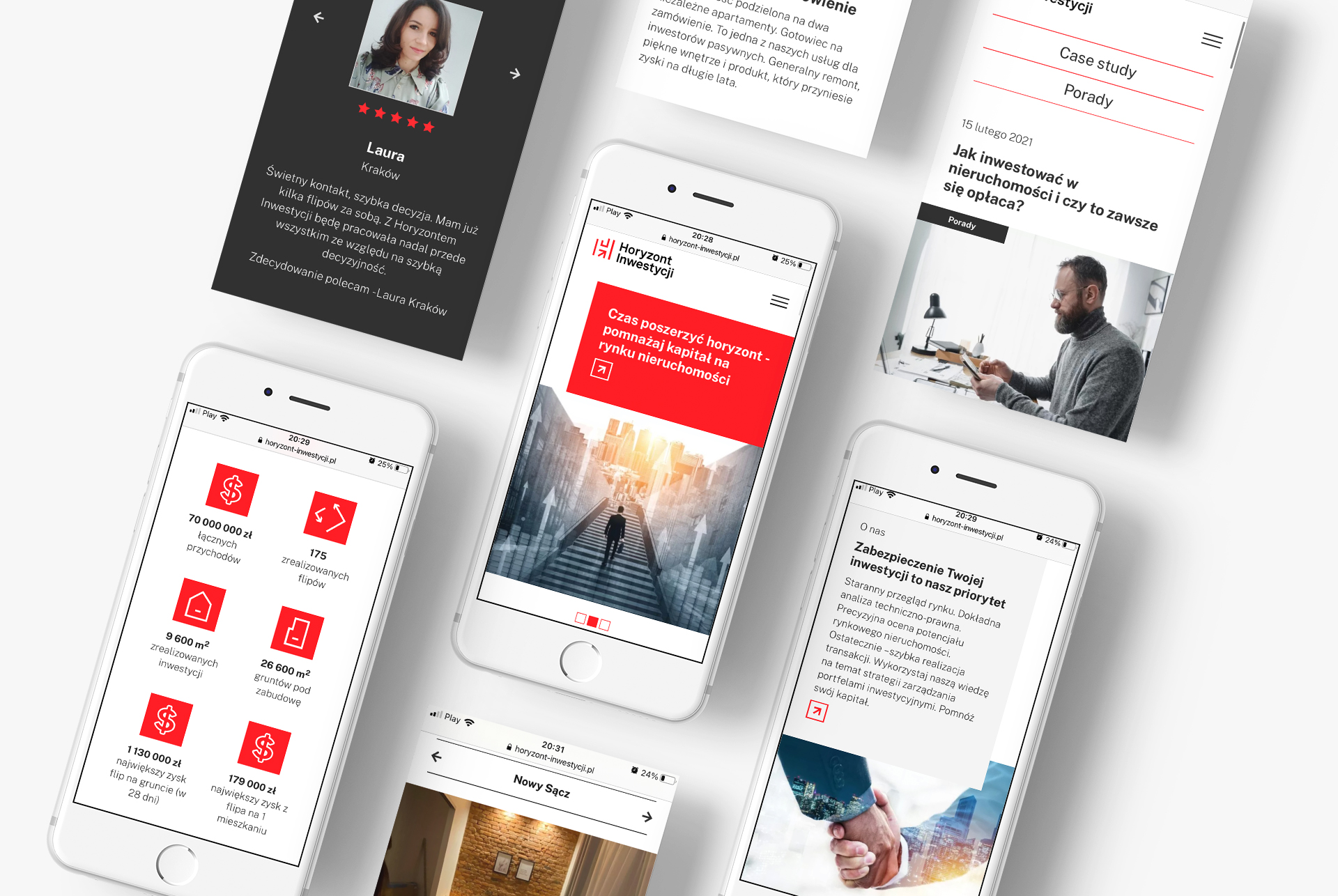
Website development - price
Building effective websites requires specialist knowledge of experts. People who follow trends and news in the field of websites on a daily basis. As we wrote above, the website design includes a number of complex elements that play specific roles. You don't have to get on with them. Ultimately, your website is designed to attract new customers and make your business stand out on the market. Specialists will make sure that you build your professional image on the web through effective website development.
One more point remains. Price. How Much Does Website Development Cost? At this stage of vagueness the answer cannot be other than - it depends. The cost of designing and implementing a website is influenced by many factors. First of all, the complexity of the site. Simple one-page websites require less work. This time will definitely be longer in the case of very complex company websites. Other factors influencing the cost are: CMS, i.e. a content management system, technology used, templates, proprietary solutions or multilingualism.
However, it is not true that every website costs a fortune. Such statements only testify to the speaker's ignorance of the market realities. It is best to report to specialists, present them your assumptions and expectations, on the basis of which they will prepare a valuation. Certainly, when developing it, the budget available to a potential client will be taken into account.
Summarizing and at the same time answering the question asked in the title of the post: nowadays a website is really a requirement, not a whim. It is a must have, without which it will be difficult for the company to exist and develop a business. The website is the best virtual showcase of the company. Both for local businesses and large corporations. The statement "if you are not on the Internet, you do not exist" is more relevant today than ever before.
* Central Statistical Office
** Bonsai startup
*** BANK.pl
**** Safari Digital
Worth knowing:
What is a website?
It is an HTML document that is displayed in a web browser. Each page also has its own unique and individual URL. We divide websites into One Page, Multi Page, business cards and company websites. We also distinguish blogs, online stores, vortals and internet portals.
How is the website built?
Each website is built of individual elements that have their roles and tasks to fulfill. The most important of them are: the headline, the CTA (call to action) button, the search field, the pop-up button and widgets.
Can a website be an effective tool for business?
A professionally made website is the best tool for modern business, which is why it is worth entrusting this task to specialists. The best solution will be to use the support of a marketing agency that will take care of everything - from graphic design to optimization and full consulting.

